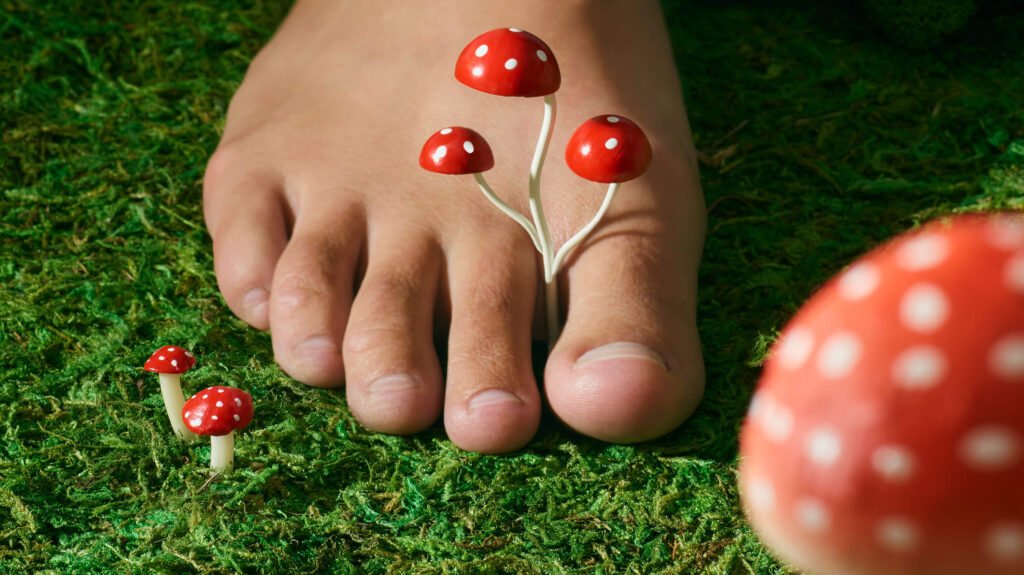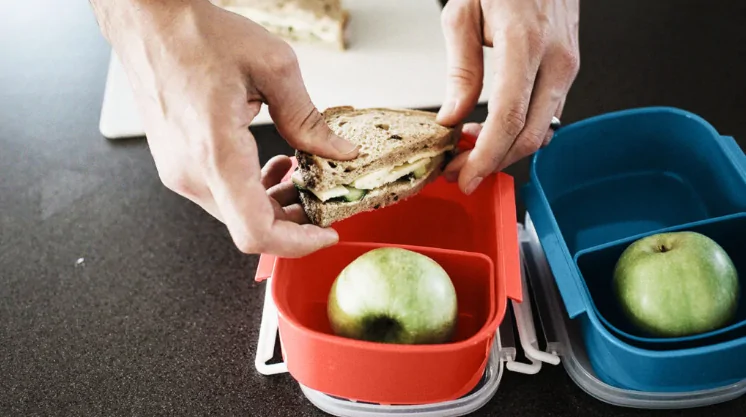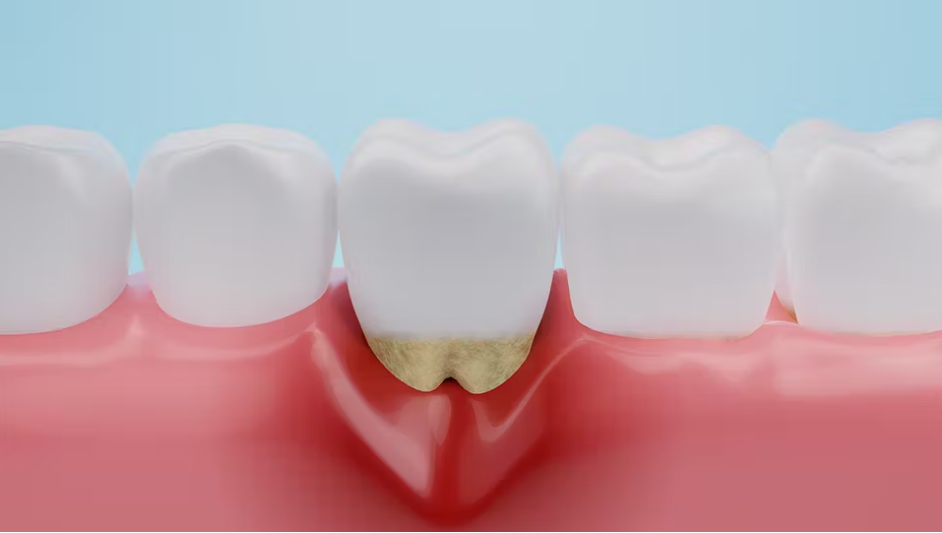Kerassentials Reviews – Is This Toenail Fungus Treatment Oil Safe For Your Skin? (Honest User Reports)

Discover in-depth Kerassentials reviews. Is this toenail fungus treatment oil safe for your skin? Learn about its ingredients, effectiveness, and real user experiences. Introduction Toenail fungus is a common problem that can be both unsightly and uncomfortable. Many products claim to offer relief, but not all of them are effective or safe. One such product gaining attention is Kerassentials Toenail Fungus Treatment Oil. In this comprehensive review, we will explore everything you need to know about Kerassentials, including its ingredients, effectiveness, safety, and user experiences. Is this toenail fungus treatment oil the solution you’ve been looking for? What is Kerassentials Toenail Fungus Treatment Oil? Kerassentials Toenail Fungus Treatment Oil is a natural remedy designed to combat toenail fungus. It is formulated with a blend of essential oils and other natural ingredients aimed at eliminating fungal infections and promoting healthy nail growth. This product is marketed as a safe and effective alternative to traditional antifungal treatments. Ingredients of Kerassentials Understanding the ingredients in Kerassentials is crucial for evaluating its safety and effectiveness. Here are the primary components: Tea Tree Oil Tea tree oil is known for its antifungal and antiseptic properties. It helps to kill the fungus and prevent its spread. Lavender Oil Lavender oil is included for its soothing properties and its ability to promote healing. Eucalyptus Oil Eucalyptus oil has antibacterial and antifungal effects, making it effective against nail fungus. Clove Oil Clove oil is a powerful antifungal agent that helps to combat the infection. Aloe Vera Extract Aloe Vera soothes the skin and promotes healing, reducing inflammation and irritation. Flaxseed Oil Flaxseed oil provides essential fatty acids that nourish the skin and nails. Lemongrass Oil Lemongrass oil has antifungal properties and helps to strengthen the nails. Click Here and Visit The Official Kerassentials Website For Detailed Ingredient Insights How Does Kerassentials Work? Kerassentials works by combining these natural ingredients to target and eliminate the fungus. The essential oils penetrate the nail and skin to attack the fungus directly, while the soothing and healing properties of the other ingredients help to repair and rejuvenate the affected area. Effectiveness of Kerassentials Many users have reported positive results with Kerassentials. The combination of powerful antifungal agents and healing oils makes it an effective solution for toenail fungus. However, results can vary depending on the severity of the infection and the individual’s response to the treatment. User Reviews and Testimonials User reviews are a valuable resource for gauging the effectiveness of a product. Here are some real user experiences with Kerassentials: Safety Precautions To ensure safety, consider the following precautions: How to Use Kerassentials Toenail Fungus Treatment Oil Proper application is key to achieving the best results. Follow these steps for effective use: Comparing Kerassentials with Other Toenail Fungus Treatments Over-the-Counter Medications Prescription Medications Home Remedies Where to Buy Kerassentials Kerassentials is available for purchase online. It’s important to buy from reputable sources to ensure you get a genuine product. Here are some recommended options: FAQs What is Kerassentials Toenail Fungus Treatment Oil? Kerassentials is a natural oil formulated to treat toenail fungus using essential oils and natural ingredients. How long does it take to see results with Kerassentials? Results can vary, but many users report improvement within a few weeks with consistent use. Are there any side effects of using Kerassentials? Some users may experience skin irritation or allergic reactions. Conduct a patch test before extensive use. Can I use Kerassentials if I have sensitive skin? If you have sensitive skin, perform a patch test and consult a healthcare professional before use. Is Kerassentials effective for severe toenail fungus? Kerassentials may be effective for mild to moderate cases, but severe infections might require prescription medication. Where can I buy Kerassentials? Kerassentials can be purchased from the official website and trusted online retailers. Conclusion Kerassentials Toenail Fungus Treatment Oil offers a natural alternative for those looking to treat toenail fungus. With a blend of potent essential oils and natural ingredients, it aims to eliminate fungal infections and promote healthy nail growth. While user experiences vary, many have found success with this treatment. As with any product, it’s essential to use it as directed and consult a healthcare professional if you have any concerns.
5 Fascinating Facts About Toenail Fungus

Toenail fungus, also known as onychomycosis, might not be the most glamorous topic, but it’s surprisingly common and often misunderstood. This pesky problem can affect anyone, and knowing a bit more about it can be both enlightening and helpful. Here are five intriguing facts about toenail fungus that might surprise you. It’s More Common Than You Think Toenail fungus affects about 10% of the population, increasing to 20% in people over 60 and 50% in those over 70. It’s not just a minor inconvenience; it can be a persistent problem that requires attention. Despite its prevalence, many people are unaware of how easily it can spread and how difficult it can be to treat. It Thrives in Unexpected Places Fungus loves warm, damp environments, making public places like swimming pools, locker rooms, and showers prime spots for picking up an infection. Even keeping your feet in sweaty socks or not drying them properly can create the perfect breeding ground for toenail fungus. Always wearing flip-flops in communal areas and keeping your feet dry can help reduce the risk. It Can Change Your Nail Color One of the most noticeable signs of toenail fungus is a change in nail color. Infected nails can turn yellow, brown, or even black. This discoloration is caused by the buildup of debris under the nail and the thickening of the nail itself. Over time, the nail can become brittle and start to crumble, which can be both unsightly and uncomfortable. Home Remedies Might Not Always Work While there are many home remedies touted for treating toenail fungus, such as tea tree oil, vinegar soaks, and Vicks VapoRub, their effectiveness can vary. Some people might see improvement, while others might not notice any change. Persistent or severe infections usually require medical treatment, including prescription antifungal medications or even laser therapy. Prevention Is Easier Than Treatment Preventing toenail fungus is much simpler than trying to treat it once it takes hold. Good foot hygiene is essential: keep your feet clean and dry, trim your nails properly, and avoid walking barefoot in communal areas. Wearing breathable shoes and moisture-wicking socks can also help keep your feet fungus-free. Taking these precautions can save you a lot of hassle in the long run. Toenail fungus might seem like a small issue, but it can have a significant impact on your foot health. By understanding these five facts, you can take steps to prevent infection and recognize it early if it does occur. Keep your feet happy and healthy by staying informed and proactive! Ready to finally be free from fungus? Watch this video NOW to learn the quick and easy steps you can take TONIGHT to get rid of fungus for good. Sources:
Why Is Toenail Fungus So Difficult to Treat?

Fungal infections of the toenails, known medically as onychomycosis, are quite common, affecting up to 20% of the population. These infections can occur in people of all ages and genders and are notoriously difficult to treat once they take hold. Dr. Christine Wilson, a foot and ankle specialist, explains the causes of toenail fungal infections, various treatment options, and steps you can take to prevent them. How Does Toenail Fungus Begin? Damaged, injured, or loosened toenails provide an ideal entry point for fungi. “These microscopic organisms are ubiquitous, thriving on both indoor and outdoor surfaces, always searching for a new habitat to colonize and reproduce,” explains Dr. Wilson. “Feet, being a warm, moist, and often enclosed part of the body, create the perfect environment for fungi.” Toenail damage can result from repetitive friction, such as in running, or from injuries. Regardless of how the damage occurs, it opens a pathway for fungi to infiltrate under and between the nail layers. Over time, fungi can even invade the nail matrix, the cells responsible for nail growth. Additional risk factors for developing toenail fungus include: Symptoms of Toenail Fungus The initial sign of a fungal toenail infection is often a small white, yellow, or brown spot beneath the nail tip. As the fungus grows deeper, the nail may thicken, become brittle, crumble, and discolor. The infection can eventually spread to adjacent nails. “While these symptoms may suggest a fungal infection, they are not conclusive,” Dr. Milliman notes. “A sample of the affected nail needs to be examined under a microscope to confirm the presence and type of fungi. This diagnosis helps in determining the appropriate treatment, if necessary.” For many individuals, toenail fungus is mainly a cosmetic issue. However, you should seek medical advice if any of the following conditions accompany the nail symptoms: Treatment Options for Toenail Fungus “Patients often ask if their immune system can clear the infection on its own,” says Dr. Wilson. “I tell them it’s possible but unlikely. The immune system attempts to fight the infection but is often ineffective because it is dealing with other issues,” she adds. “There are no guarantees, however,” says Dr. Wilson. “These treatments work for some but not others, and there is no harm in trying them. As with many conditions, the earlier the treatment starts, the higher the likelihood of success. Treatment options include. Ready to finally be free from fungus? Watch this video NOW to learn the quick and easy steps you can take TONIGHT to get rid of fungus for good.
Which foods can help to lower and control blood sugar?

Foods with a low glycemic index (GI) can play a crucial role in helping individuals lower or manage their blood sugar levels effectively. These include whole grains, nuts, legumes, certain fruits, non-starchy vegetables, and lean proteins. For individuals managing diabetes, foods and beverages that the body digests slowly are typically preferred because they help avoid sudden spikes and drops in blood sugar levels. Health professionals often recommend these as low GI foods, as the glycemic index measures how specific foods affect blood sugar levels. Those seeking to regulate blood sugar levels should consider incorporating foods with low or medium GI scores into their diet. Additionally, balancing meals by combining foods with both low and high GI scores can help maintain steady blood sugar levels. It’s important to note, however, that there is no evidence suggesting that consuming specific foods can rapidly lower blood sugar levels in cases of a diabetes-related emergency. Here are some of the top foods recommended for maintaining healthy blood sugar levels: Stone-ground whole wheat or pumpernickel bread Several types of bread have high glycemic index (GI) scores, which can lead to rapid spikes in blood sugar levels. Research indicates that adopting low GI eating patterns can gradually improve a person’s blood sugar response over time. Therefore, individuals with diabetes may want to consider avoiding certain varieties of bread. Breads to eat Breads to avoid Most fruits except for pineapples and melons, generally have low glycemic index (GI) scores. This is due to their high water and fiber content, which helps balance out their natural sugar content, known as fructose. However, as fruits ripen, their GI scores tend to increase. Fruit juices also typically have very high GI scores because the juicing process removes the fibrous skins and seeds. Therefore, consuming fresh fruits is preferable. A 2017 study that tracked approximately half a million people in China over 7 years found that those who consumed fresh fruit daily had lower rates of type 2 diabetes (T2DM). Fruits to eat Fruits to enjoy in moderation Sweet potatoes and yams Have lower glycemic index (GI) scores compared to white potatoes, although they are still relatively high. Despite this, they are highly nutritious. Sweet potatoes are rich in fiber, potassium, zinc, and vitamins A and C. Health experts often suggest sweet potatoes as a beneficial alternative to white potatoes in various dishes, ranging from fries to casseroles. In addition to incorporating more sweet potatoes and yams into their diet, individuals may consider reducing or avoiding white potatoes and commonly consumed products made from them, such as french fries and mashed potatoes. Oatmeal and oat bran Oats have a low glycemic index (GI) score, making them less likely to cause spikes and dips in blood sugar levels. Additionally, oats contain beta-glucan, which has several beneficial effects: A 2021 meta-analysis of 103 trials examined the impact of beta-glucan on post-meal blood sugar levels. The findings indicated that meals containing beta-glucan from carbohydrates were associated with lower blood sugar levels compared to meals without beta-glucan. Stone-ground and rolled oats are typically recommended over processed oats, instant oats, and cereal bars. Garlic Garlic is commonly used in traditional remedies for diabetes and various other conditions. Compounds found in garlic may contribute to lowering blood sugar levels by enhancing insulin sensitivity and secretion. According to a 2017 review, garlic supplements were found to assist in managing blood sugar and cholesterol levels in individuals with type 2 diabetes (T2DM). Ways to add garlic to the diet Fatty fish Fish and other animal proteins typically do not have glycemic index (GI) scores because they do not contain carbohydrates. However, consuming fish rich in omega-3 fatty acids like docosahexaenoic acid (DHA) and eicosapentaenoic acid (EPA) may offer better management or prevention of diabetes compared to other types of animal protein. A 2021 study revealed that individuals who regularly consumed oily fish had lower rates of developing type 2 diabetes (T2DM) compared to those who did not. Additionally, a small-scale 2017 study indicated that participants who included plenty of fatty fish in their diets showed improved blood sugar regulation after meals compared to those who did not consume fish. While further research is needed, there is some evidence suggesting a potential link between mercury and T2DM. Health experts advise limiting consumption of fish high in mercury, particularly among children, pregnant individuals, and nursing mothers. Fish products to eat Fish to limit
Other ways to lower blood sugar levels

Maintaining a healthy, well-balanced diet is essential. Beyond diet, there are additional strategies that can help lower or manage blood sugar levels while also offering intriguing insights: Individuals with diabetes may also require medications and regular blood sugar monitoring to mitigate the risk of potential complications and symptoms. Consulting with a healthcare provider can provide personalized guidance on integrating a healthy diet into a comprehensive diabetes care plan. Below are frequently asked questions relating to diet and blood sugar control. What foods are good for hyperglycemia? Choosing healthy proteins, fats, and non-starchy vegetables can effectively manage hyperglycemia. Carbohydrates that are lower in sugar and high in fiber are less likely to cause spikes in blood sugar compared to refined carbs. Optimal carbohydrate choices include: Additionally, lean proteins such as chicken, oily fish, and non-starchy vegetables are excellent options for managing hyperglycemia. What foods cause hyperglycemia? Hyperglycemia arises from insufficient insulin production or insulin resistance. The underlying factors contributing to hyperglycemia are typically complex and vary based on inherited predispositions, overall health, dietary habits, and lifestyle choices. However, diets rich in processed carbohydrates and sugars significantly elevate the risk of blood sugar spikes. What foods to avoid if you have hyperglycemia? When managing hyperglycemia, it’s advisable to restrict high-sugar foods and simple, refined carbohydrate products. Specific items to limit or avoid include: What foods will lower blood sugar quickly? The quickest method to lower blood sugar levels is through the administration of fast-acting insulin medication. Physical exercise is another effective way to rapidly reduce blood sugar levels. While diet and lifestyle adjustments play a crucial role in managing overall blood sugar levels over time, immediate intervention may require prescription medication or medical intervention.
How To Shrink An Enlarged Prostate Natural

Are you curious about natural ways to reduce an enlarged prostate, or wondering if it’s feasible? If so, you’re in the right place. Managing an enlarged prostate, also known as benign prostatic hyperplasia (BPH), can be daunting. However, there are natural remedies that may alleviate symptoms and support prostate health. Even if you’re currently taking medication for BPH, these home remedies can complement your treatment and ease symptoms. But first, let’s delve into a closer understanding of BPH. What is benign prostatic hyperplasia? BPH is a prevalent health issue among males, affecting around 50% of men aged 51-60 and 70% of those aged 60-69. This percentage increases to 80% for men over 70 years old. As men age, the prostate gland often enlarges, a condition known medically as benign prostatic hyperplasia (BPH). This enlargement occurs due to the multiplication of cells within the prostate over time. The enlarged prostate can exert pressure on the urethra, leading to urinary difficulties such as: Ignoring symptoms of BPH can lead to complications like urine retention and potential kidney damage. Depending on the severity, your doctor may recommend regular monitoring or suggest treatment if necessary. Can an enlarged prostate shrink naturally on its own? In short, no. However, there are four natural remedies you can try at home to help alleviate your symptoms. How to shrink an enlarged prostate naturally with a Sitz bath A sitz bath is an age-old form of hydrotherapy that can effectively alleviate symptoms associated with an enlarged prostate. This therapeutic technique involves alternating between hot and cold baths. Sitting in warm water helps relax pelvic muscles and promotes healing, while cold water reduces swelling of the prostate and alleviates pain. To try this method at home, fill your bathtub with warm water (105-115°F) and add half a cup of Epsom salt. Prepare another large container with cold water (55-85°F) and add a few drops of lavender essential oil. Sit in the warm water for 3 minutes, then switch to the cold water for 1 minute. Repeat this cycle three times, finishing with a cold bath. This approach to prostate relief is supported by research involving patients who underwent transurethral resection of the prostate (TURP), demonstrating faster healing and fewer complications. Kegel exercises Engaging in pelvic-strengthening or Kegel exercises can alleviate discomfort associated with an enlarged prostate. These exercises focus on tightening and clenching specific pelvic muscles, improving urinary control. Kegel exercises are particularly effective for reducing prostate swelling and enhancing urinary flow. To perform Kegel exercises: Need help locating your pelvic floor muscles? Here’s a tip: While urinating, try to stop and start the flow. The muscles engaged during this action are your pelvic floor muscles, the ones you aim to strengthen through Kegel exercises. For best results, repeat these exercises 10-20 times, 2-3 times per day to alleviate symptoms of benign prostatic hyperplasia (BPH). However, men with chronic prostatitis or chronic pelvic pain syndrome should avoid these exercises. Apple cider vinegar for prostate issues Unfiltered raw apple cider vinegar is widely used as a natural remedy for various health issues, including prostate gland problems. Its acidic nature is believed to aid in reducing prostate gland swelling and preventing associated complications like urinary tract infections. One way to consume apple cider vinegar is by mixing it with a tablespoon of honey in a glass of warm water and drinking it. Another option is to incorporate it into salad dressings. For a different approach, you can add a cup of apple cider vinegar to cool bath water and soak in it for approximately ten minutes. Stinging nettle extract While many have experienced sharp pain from touching stinging nettles, these plants contain beneficial compounds for prostate health. A 2019 study found that nettle root extract effectively soothes the prostate and alleviates symptoms of benign prostatic hyperplasia (BPH). Participants in the study reported significant increases in urine flow and reductions in prostate volume. Natural foods to shrink the prostate While foods cannot guarantee to shrink the prostate, incorporating nutritious foods can provide a line of defense. It’s important for all men to understand that certain vitamins and minerals in their diet can help maintain a healthy prostate and reduce the risk of benign prostatic hyperplasia (BPH). Foods recommended for a prostate-friendly diet include: While natural remedies cannot cure an enlarged prostate, lifestyle and dietary changes can contribute to managing prostate health effectively. Source: Midwest Institute for Non-Surgical Therapy
Best Neck Exercises and Massage Techniques for Tinnitus

Neck exercises can offer benefits for tinnitus, the perception of sounds without an external source. These exercises aim to reduce tension, promote relaxation, and enhance blood flow. Tinnitus manifests as ringing, buzzing, or hissing sounds in the ears, often caused by injuries, hearing loss, or exposure to loud noises. It can vary from mild to severe and may be temporary or chronic. Treatment options for tinnitus include medications, exercises, and sound therapy. Targeting neck muscles through exercises can alleviate symptoms by easing tension and improving circulation, leading to symptom relief. While neck exercises and related massage techniques cannot cure tinnitus, they may help mitigate its symptoms effectively. Neck exercises for tinnitus You can perform these exercises while sitting or standing. Ensure your body is properly aligned, shoulders relaxed, and tension fully released between each exercise. Maintain deep breathing and relaxation throughout the routine. Begin with gentle movements and gradually increase intensity and duration as you feel comfortable. Listen to your body and discontinue any exercise that causes pain or discomfort. Before starting any new exercise regimen, it’s advisable to consult with a doctor or other healthcare professional. Shoulder shrugs This exercise is designed to alleviate tension in the neck and shoulders: This routine can help relieve tension buildup in your neck and shoulders effectively. Shoulder rolls To loosen tension in your neck and shoulders, follow these steps for the exercise: This exercise helps to release tension and promote relaxation in the neck and shoulder muscles. Neck rotations This exercise stretches the neck muscles and improves blood flow to the head and neck: This routine helps to increase flexibility and circulation in the neck area, promoting relaxation and relieving stiffness. Massage techniques for tinnitus These massage techniques can alleviate tension and discomfort, promoting relaxation. You may want to use a gua sha tool for specific exercises. Scalp massage This routine can help release tension and promote relaxation in the scalp muscles. Top of head massage This technique helps to relieve tension and promote relaxation in the scalp and head muscles. Neck massage This technique can help relieve tension in the neck and promote relaxation. Source: Eladl HM, et al. (2022). Effect of adding a supervised physical therapy exercise program to photobiomodulation therapy in the treatment of cervicogenic somatosensory tinnitus: A randomized controlled study.
Can You Regrow Your Gums?

If you’ve noticed that your teeth appear larger than before, it might not be your imagination. While your teeth themselves haven’t changed size, your gums may be receding, a common indicator of gum disease. In fact, over 70% of adults over 65 experience gum disease, often accompanied by gum recession around at least one tooth. This condition isn’t exclusive to older adults; younger individuals aged 30 and up can also be affected. If you’re facing this issue, you might be curious about restoring your smile and whether gums can regrow naturally or if treatment is necessary. Discover what causes gum recession and explore treatment options available to address this condition. Will Your Gums Grow Back? Once your gums have receded from your teeth, they won’t regenerate or grow back naturally. While research has explored methods like placing a thin membrane between the affected tooth and gum, these treatments are still undergoing trials and not widely available. Although your gums won’t regrow on their own, you can prevent the condition from worsening and potentially avoid surgical interventions. Why Do Your Gums Recede? Taking care of your gums is crucial for maintaining overall oral health. While gum disease is often associated with receding gums, there are various reasons why gums may pull away from teeth: Crowded teeth: If your permanent teeth emerge in a crowded arrangement, there may not be enough gum tissue to cover all the teeth properly.Genetics: Some individuals naturally have thin and fragile gums due to genetic factors.Aggressive toothbrushing: Brushing too vigorously with a hard-bristled brush can wear down gum tissue over time.Tobacco use: Using tobacco products, whether chewing tobacco, cigars, or cigarettes, can contribute to gum recession and other oral health issues.Gingivitis: This mild form of gum disease causes inflammation and can lead to gum recession if left untreated.Periodontitis: Untreated gingivitis can progress to periodontitis, a more severe form of gum disease that damages the bones and tissues supporting the teeth, potentially leading to tooth loss.Aging: As people age, the risk of developing gum disease increases. Over 70% of adults aged 65 and older in the United States have some form of gum disease.Understanding these factors can help you take proactive steps to prevent gum recession and maintain healthy gums and teeth throughout your life. Treating Recessed Gums If you’re concerned about recessed gums, it’s essential to consult your dentist for an evaluation. Using a periodontal probe, a dental professional can assess the extent of gum recession and determine the underlying cause. Treatment options for recessed gums vary depending on the severity and cause of the condition: Non-Surgical Treatments:Dental Fillings or Bonding: In mild cases, your dentist may use tooth-colored fillings or bonding to camouflage areas of gum recession, improving aesthetics and comfort. Surgical Treatments: Periodontal Pocket Procedures: When there’s a gap or “pocket” between the tooth and gum due to recession, bacteria can accumulate, leading to further issues. Surgical procedures involve removing damaged tissue and smoothing the underlying bone to facilitate gum tissue reattachment.Gum Grafts: This procedure aims to cover exposed tooth roots, prevent additional bone loss, and reduce gum recession. Gum tissue is typically harvested from the palate (roof of the mouth) and placed over the affected area. Different techniques can be discussed with your surgeon to determine the most suitable approach for your specific needs.Seeking timely treatment can help prevent complications associated with gum recession and restore oral health effectively. Preventing Recessed Gums To maintain healthy gums and prevent recession, it’s crucial to follow proper oral care practices. Here are some tips to consider: Consult with your dentist: Discuss your oral hygiene habits with your dentist to ensure they are suitable for preventing gum recession. They can provide guidance on proper brushing techniques and recommend a soft-bristled toothbrush to avoid irritating your gums.Floss regularly: Flossing helps remove plaque and bacteria from between your teeth, reducing the risk of gum disease that can lead to recession.Brush effectively: Brush your teeth thoroughly twice a day to remove plaque buildup. Consider using a toothpaste formulated to address gum sensitivity or recession, such as Sensodyne Sensitivity & Gum Whitening Toothpaste, if you experience sensitivity or gum-related issues.By practicing these habits and maintaining regular dental check-ups, you can help protect your gums and maintain a healthy smile. Source: University of Pennsylvania Penn Dental. “How To Fix Receding Gums: 4 Top Options.Oral Health Foundation. “Promising new treatment could regenerate gum tissue and prevent tooth loss.”Journal of the American Dental Association. “Gingival recession: Causes and treatment.”Cleveland Clinic. “Gum Recession.”American Academy of Periodontology. “Gum Disease Information.”American Academy of Periodontology. “Surgical Procedures.”American Academy of Periodontology. “Gum Disease Risk Factors.”
